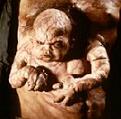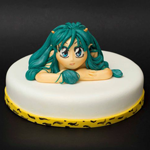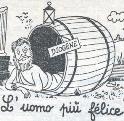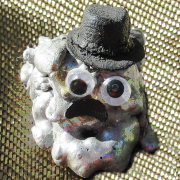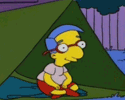|
Meh, my first attempt at this stuff
|
|
|
|

|
| # ? Apr 19, 2024 07:12 |
|
Moist von Lipwig posted:Not sure what happened to the sky here. It probably had something to do with all the sodium lights pushing the colour temperature over 50000. I think the first B&W is the strongest. Framing compliments the architecture, or something. If you have access to Photoshop, you could easily fix that sky with some masked adjustment layers. I like the shot, but the sky is almost too surreal.
|
|
|
|
William T. Hornaday posted:Alexey Titarenko, perhaps? Ahhhh! Yes that must be it.
|
|
|
|
I just posted this in the May photo-a-day thread as well This is from the grunion run (fish spawning on beach at night) in LA this past weekend, long exposure with only incidental light: 
|
|
|
|
(a long time ago,) quazi posted:Boomer Lake?  (pic taken in '02)
|
|
|
|
Anjin posted:I just posted this in the May photo-a-day thread as well Very nice, what sort of light was illuminating the side of the lifeguard station? I really like the color it created on the wood.
|
|
|
|
PlasticSun posted:Very nice, what sort of light was illuminating the side of the lifeguard station? I really like the color it created on the wood. The moon! It was a perfectly clear night and the moon was just a couple days past full.
|
|
|
|
Anjin posted:The moon! It was a perfectly clear night and the moon was just a couple days past full. Cool, I usually get very blueish light from the moon, all that city pollution must be good for something!
|
|
|
|
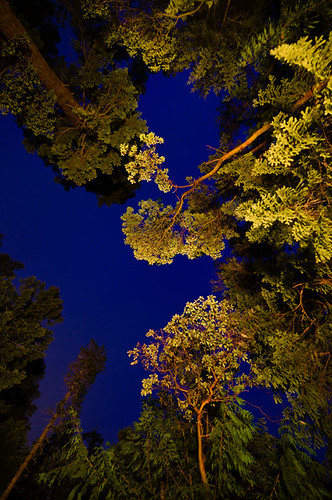
|
|
|
|
joat mon posted:Boomer Lake? 
|
|
|
|
I love night time photography but I'm only just starting out. All shot with Sony A550.   The following was shot at 1600 ISO.  The following was shot out of a plane during a storm, again with a 1600 ISO. 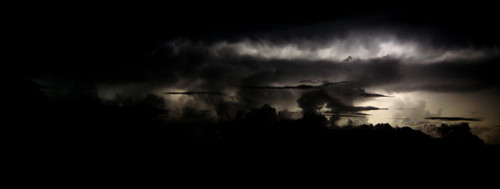 The following three were shot by 'painting' the subject with a torch.  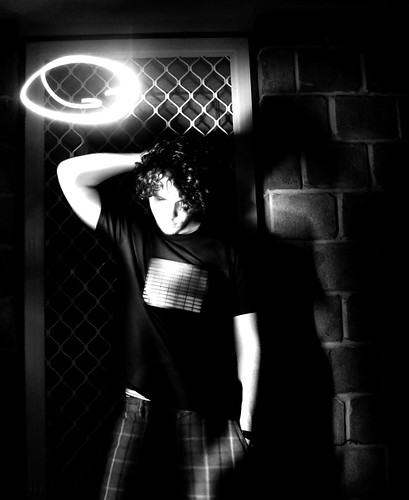  Any comments/critiques would be appreciated. Also the A550 handles high ISO shooting amazingly.
|
|
|
|
Put this in the amateur astronomy thread, figured I put it over here as well as people may be interested. The North American Nebula,an emission nebula in cygnus and my focus for the last couple of nights, I'm pretty happy with the results.  Imaging Kit : William Optics ZS66SD Refractor / Canon EOS1000D (unmodified) / Astronomik CLS CCD Filter 285 minutes total exposure time (57x5 minutes)
|
|
|
|
Shot handheld from the 96th floor of the John Hancock in Chicago. Cross-posted from SAD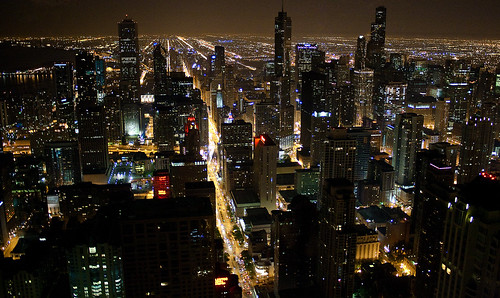
|
|
|
|
Jekub posted:Put this in the amateur astronomy thread, figured I put it over here as well as people may be interested. Are those actually the visible light colors of the nebula and galaxies you've been posting? I know NASA likes to play around with its Hubble pictures and make them nice and colorful, but a 1000D is no Hubble
|
|
|
|
TiberiusM posted:Are those actually the visible light colors of the nebula and galaxies you've been posting? I know NASA likes to play around with its Hubble pictures and make them nice and colorful, but a 1000D is no Hubble Looks like it might be -- apparently almost everything in space that glows is a pale pink color, the color of the hydrogen-alpha spectral line. I'm sure that Jekup knows way more about that.
|
|
|
|
I image using a unmodified DSLR so those are basically the natural colours. The only processing I do for colour is correction, as you would for your normal photographs, and a saturation stretch which is needed as by default the image is very grey. As a hydrogen alpha emission nebula it can be a bit of a challenge to image with a stock DSLR, the built in IR cut filter blocks a lot of the light in that wavelength. However we have ways around that, first using a good filter, in my case an Astronomik CLS CCD filter helps enhance the contrast of the object as well as blocking out unwanted light pollution. Then we can do long exposures to capture more of the faint light from the nebula and lots of them to give a good signal to noise ratio. Modifying the camera to remove or replace the IR filter is also popular. After that it's just a lot of time spend in processing, removing things we don't want (sensor noise, vignetting and dust doughnuts etc) and enhancing the things we do want. Images from Hubble, other professional telescopes and images taken by the more advanced amateur tend to be taken with single shot mono cameras. They take several sets of images through different narrowband filters then combine those to create the completed image. Typically this would be red, green, blue and luminance in specific wavelengths. The combination of those images creates the palette, they could be true colour like mine, of combined to show different wavelengths in greater detail. Anyway, it's a huge topic, worthy of it's own thread if there were a few more astrophotography goons.
|
|
|
|
Jekub posted:I image using a unmodified DSLR so those are basically the natural colours. The only processing I do for colour is correction, as you would for your normal photographs, and a saturation stretch which is needed as by default the image is very grey. I'd love to do it, as I've always loved space imagery, but it seems like it would be a lot of money to get into. How much is it for a basic setup? This was my only night shot I've really liked, although I have a few more on my flickr: 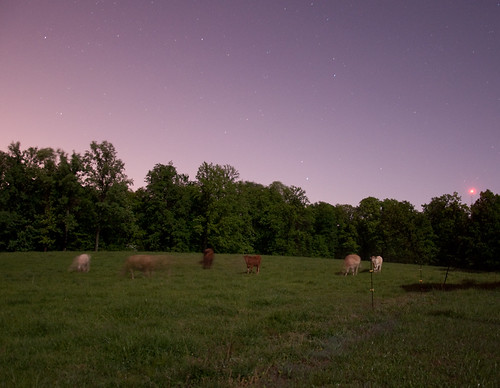 Here's another one I like a lot, but it's only 1.6seconds, not really super long. Taken after the big fireworks show in Louisville. It made me happy to be on the other side of the river that night. 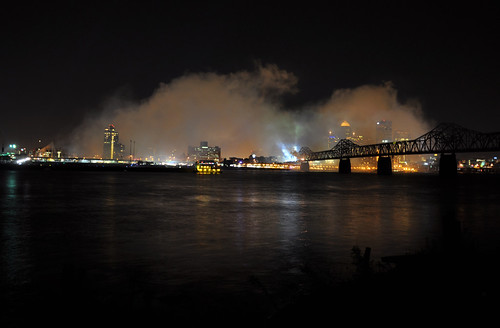
subx fucked around with this message at 05:37 on Jun 4, 2010 |
|
|
|
Timage posted:I love night time photography but I'm only just starting out. All shot with Sony A550. Sorry, I'm feeling a little too
|
|
|
|
subx posted:How much is it for a basic setup? A basic setup for widefield astrophotography would be mount, telescope, camera, guidescope and guide camera (guiding is normally required for exposures of more than a minute depending on focal length and mount quality) and a laptop to run it all, plus a selection of adapters and cables. I'm not sure what the cost of things are in the US but I could put together a basic setup for around £1250 assuming I had a camera and laptop already. That would be an HEQ5 mount, light weight but supporting error correction and autoguiding and a 70mm refractor. If you wanted to do widefield imaging with a standard lens and have the possibility of using a small telescope at a later date then take a look at Astrotrac. There is an amateur astronomy thread in DIY and Hobbies as well with plenty of talk on this subject.
|
|
|
|
Moonrise over our overwater bungalows: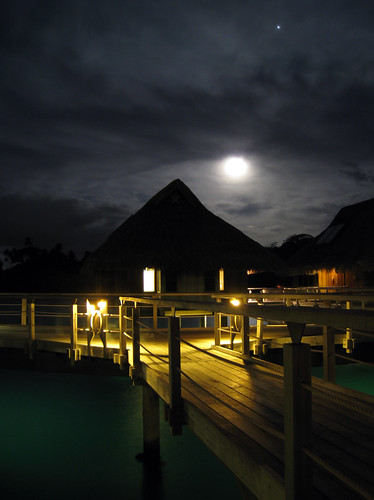 how about a shorter long exposure at a hula show?: 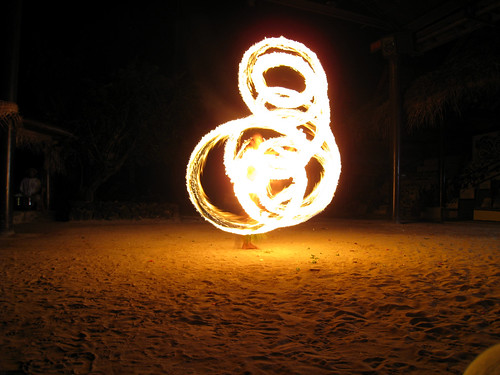 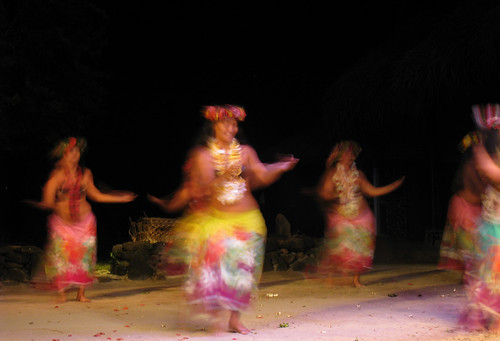
|
|
|
|
[quote="Anjin"] Moonrise over our overwater bungalows:  Stunning, especially when I'm sat stuck in a rainy office on a grey, wet morning in London.
|
|
|
|
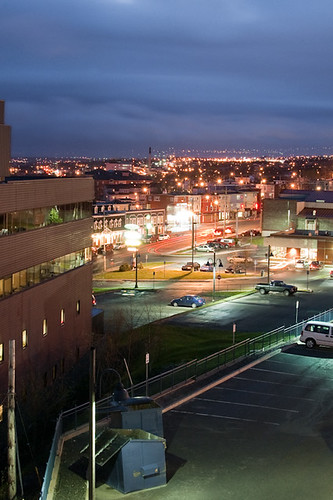
|
|
|
|
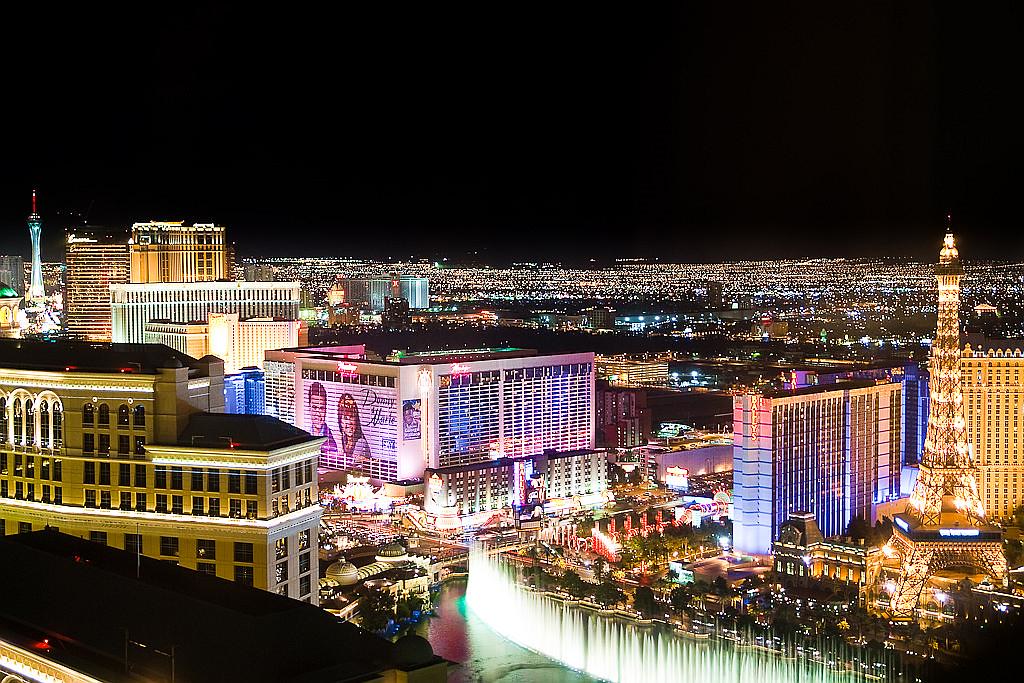 ..shot through a dirty window unfortunately. I couldn't find any balconies in the hotel.
|
|
|
|
Can someone give me some advice on how to do a decent photograph of the International Space Station on it's route over the UK this evening. It will be 10:28, so probably not completely dark at this time of year. The station will be pretty bright on this pass, magnitude -3.5. I was hoping to use my widest lens, my Sigma 17-70 f/3.5 and my Canon 400D body and see if I can get a long shot to make a trail, hopefully with a lot of the stars in view too. I have no idea how to set the settings for this. I'm also struggling because I have no remote for my camera, so I'm going to have to put it into bulb mode and tape the shutter down or something. Any tips?
|
|
|
|
Anyone? This is four hours away and I'm stuck.
|
|
|
|
I haven't done anything like that myself, but not having a remote shutter release is going to be a pretty big problem. On a long exposure, you simply pressing and depressing the button is going to be enough to ruin your exposure. If you want to give it a shot without one, make sure the camera body is rock-solid stable. Maybe clamp it somehow? And keep in mind that the stars themselves will likely produce some trails, though the ISS should still stand out quite starkly considering how much faster and brighter its path will be. Tight aperture, isolated from light pollution, clear sky are all tips I'm sure you're aware of. Good luck.
|
|
|
|
scottch posted:I haven't done anything like that myself, but not having a remote shutter release is going to be a pretty big problem. On a long exposure, you simply pressing and depressing the button is going to be enough to ruin your exposure. If you want to give it a shot without one, make sure the camera body is rock-solid stable. Maybe clamp it somehow? If you can jam the shutter release down somehow, put a black card over the lens while you do it. Then put the black card back over the lens before you fiddle with the camera to close the shutter.
|
|
|
|
thehustler posted:Can someone give me some advice on how to do a decent photograph of the International Space Station on it's route over the UK this evening. It will be 10:28, so probably not completely dark at this time of year. The station will be pretty bright on this pass, magnitude -3.5. Turn off Long Exposure Noise reduction and put your ISO at 1600, f3.5, on a tripod and set the exposure for 30 seconds. Use the self timer so that you don't get camera shake from hitting the shutter. The ISS transits pretty quickly so timing will be somewhat important but you should end up with a starfield and the ISS as a streak against that. It will be best if there's no moon as the moonlight will wash out the milkyway. Edit here's an example at 20 seconds (no ISS in it though) but you can go as long as 30 without the stars blurring. 
|
|
|
|
That's genius, I'll remember that. Yeah, what I'm planning to do is use some heavy duty tape to tape the shutter down for the entire 4 minute pass, I suppose I could do it with mirror lockup turned on to stop any vibration that way, couldn't I? I'll definitely try and put something black over the lens before doing that, though.
|
|
|
|
Remember that even if the pass is 4 minutes you'll likely only have it in your field of view for 45-50 seconds. anything longer than about 45 seconds of exposure will start to create startrails.
|
|
|
|
How do you guys get these clean sky shots? I figure most of you also have to deal with light pollution, but whatever I try, they're filled with orange to boot (road lights in Belgium are orange, and we've a lot of those). There's just so much you can filter. --edit: Tried with with that lovely kit lens that came with the EOS400D, and as well as my new Sigma 30mm f1.4, which even came with a lens hood (if that actually helps).PlasticSun posted:Edit here's an example at 20 seconds (no ISS in it though) but you can go as long as 30 without the stars blurring. Combat Pretzel fucked around with this message at 17:56 on Jul 3, 2010 |
|
|
|
Combat Pretzel posted:How do you guys get these clean sky shots? I figure most of you also have to deal with light pollution, but whatever I try, they're filled with orange to boot (road lights in Belgium are orange, and we've a lot of those). There's just so much you can filter. --edit: Tried with with that lovely kit lens that came with the EOS400D, and as well as my new Sigma 30mm f1.4, which even came with a lens hood (if that actually helps). Nah just need a gobo between the lens and the fire to prevent flare. The only post that was done on that image was removing a bit of lens distortion and bumping the luminance of the blue channel. To get a dark sky you need a dark sky. That shot was taken about 20 miles from the nearest town. From the looks of things Belgium looks pretty short on dark sky spots: http://www.oarval.org/UE-LP.htm. I'd try and find a farm and go out into the middle of the field at night or if there's a lake with a small island in the middle to try that out. Typically I don't use a lens hood at all when I take shots of the night sky as I'm trying to get in all the ambient light I can. You're limited to about a 30 second exposure before you start to get star trails and 20 seconds is even better.
|
|
|
|
Hmmm, despite the lovely lighting conditions in my country (best and most lit country in the world  ), I've tried it last night anyway. Turns out that setting AWB to Tungsten and aiming away from the lights nets some results. And it took only ISO 800 and 10-15 seconds to make out the milky way with that f1.4 Sigma. Too bad that "away from the lights" involves an annoyingly huge tree line in my view. ), I've tried it last night anyway. Turns out that setting AWB to Tungsten and aiming away from the lights nets some results. And it took only ISO 800 and 10-15 seconds to make out the milky way with that f1.4 Sigma. Too bad that "away from the lights" involves an annoyingly huge tree line in my view.There's a long road to the south of this region, that goes through lots and lots of forrest and doesn't feature any street lights. Despite that, turns out that there's still moderate enough traffic to annoy me, even on Sunday at 3am (strange, since the northern and southern part of the region can't stand each other).
|
|
|
|
Combat Pretzel posted:Hmmm, despite the lovely lighting conditions in my country (best and most lit country in the world You don't have to get too far away from headlights to minimize their impact. A pair of headlights has less than a 10th of the power of a freeway street light. I'd try for a field, or if you've got one nearby a long (hopefully unlit) pier or jetty. With that fast lens you can likely get some really nice shots at 30 seconds / ISO 1600.
|
|
|
|
More astrophotography with my little ZS66SD refractor. The Cygnus Loop (Veil complex), a massive super nova remnant, you could fit six full moons in this frame. 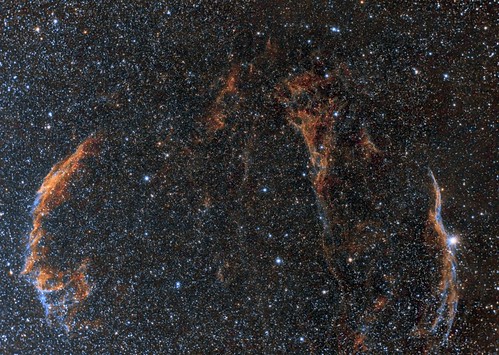 The Crescent nebula, also in cygnus. 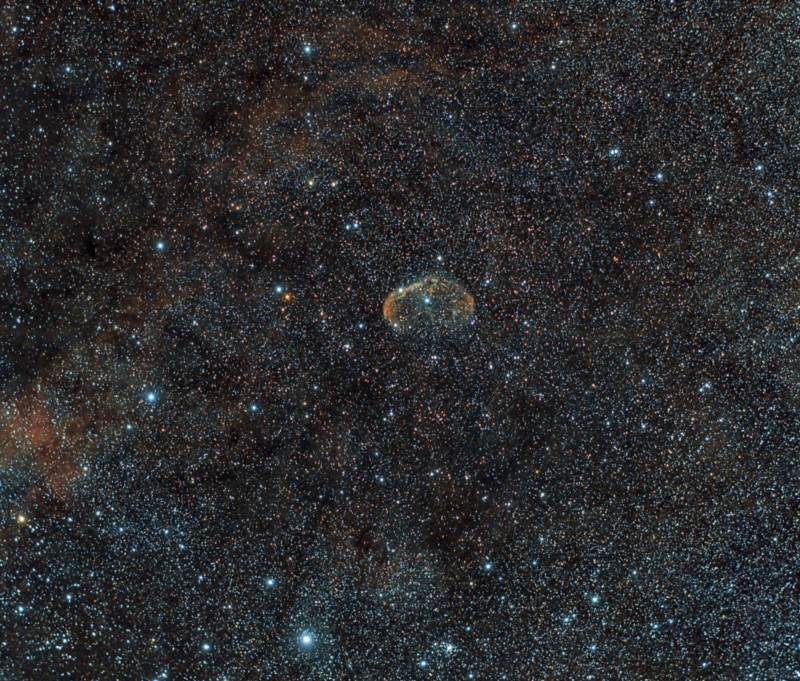 Working with images from any area where you are looking directly into the milky way makes for some very interesting processing challenges, doubly so in this region where you are also dealing with massive clouds of h-alpha nebulosity. Jekub fucked around with this message at 21:46 on Jul 12, 2010 |
|
|
|
 Took a chance shooting the Milky Way over the weekend. A little too noisy, but I had to shoot @ 6400 to get the view. Next time I'm going to try a faster lens so I can shoot at 1600.
|
|
|
|
Click the image to view it on a black background (easier on the eyes). IC 2944 is an emission nebula which is situated in between the Southern Cross and the Eta Carinae Nebula. It is sometimes colloquially referred to as the Running Chicken Nebula because that's what it somewhat looks like in widefield images of this intricate region. The cluster of bright stars near the middle of this image are the Cr249 open cluster. The bright star up the top is Lambda Centauri, after which this region is named.  H
|
|
|
|
That's a cracker Octane2, got my get on with modifying my camera the reds you get are stunning. I tend to end up orange and to much of a stretch or adjusting the balance just causes problems elsewhere.
|
|
|
|
TheAngryDrunk posted:Sure. I have the original 4272 x 2848 file. Do you just want a jpg or the raw file? I suck at post, so you're more than welcome to mess with it.
|
|
|
|

|
| # ? Apr 19, 2024 07:12 |
|
Here's a picture from a friend's summer cottage, with not that long of an exposure but shot around the midnight: This one has even shorter exposure but again, it is around midnight. It is a 60 image hand held panorama (about 18000x7000 pixels in full size).  Here's a crop from the middle of the previous picture: 
DoLittle fucked around with this message at 10:48 on Jul 8, 2010 |
|
|



